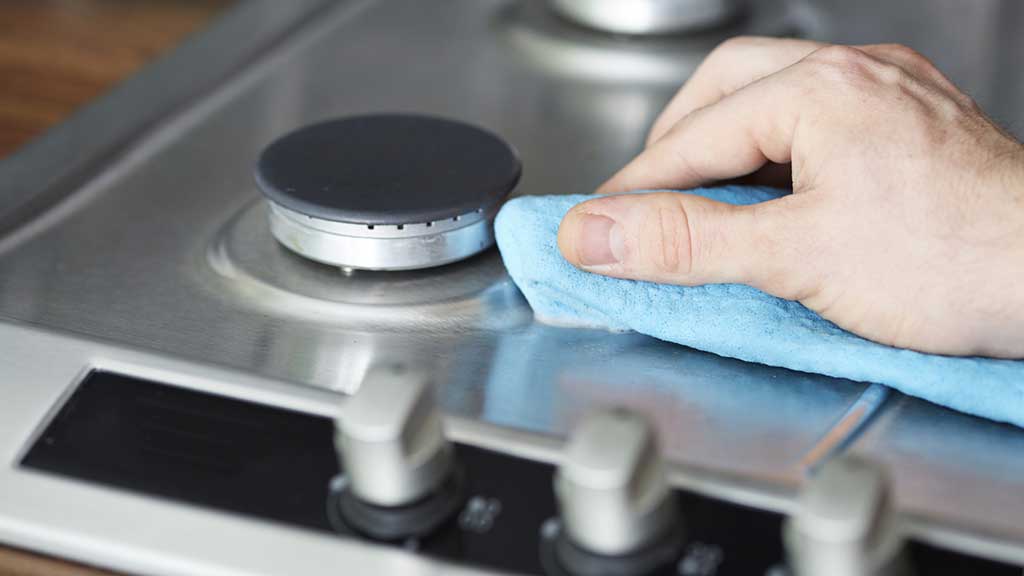Get our independent lab tests, expert reviews and honest advice.
How to clean a cooktop

It’s a rare person who enjoys cleaning. Sure we all love the end result, but the chore itself? It’s hard, backbreaking work, especially if you’ve let it go for a few weeks … or months … or … (shudder).
On this page:
The sensible option is to clean as you go, but when all else fails there are some easy ways to cut through the grime and bring back the shine to your stove.
How to clean ceramic and induction cooktops
These cooktops look good, but be aware that you’ll need to take care to keep them spick and span.
Surface
Act quickly, or prepare to spend more time and energy later on:
- Spills that can bake in and get crusty – wipe them up quickly, especially if your cooktop doesn’t have a lip around the edge to contain them.
- Sugary foods that will pit the surface if not wiped away immediately.
- Plastics or foils that come in contact with the hot surface, which will need to be cleaned off straight away.
- Limescale, water and oil/fat splashes can wait until the cooktop’s cooled down before you clean them up.
Controls
Knobs should be easy to remove for cleaning underneath. A seal around the controls should help prevent any spills getting inside the workings of your cooktop. Push-button or touch controls make cleaning even easier, as you can just wipe over them.
Cleaning tools
Cleaning these types of stoves can be hard work, but with the right tools the job’s made much easier.
- Use a scraper to remove any baked-on messes.
- A ceramic glass cleaner and a microfibre cloth will help to keep the surface looking clean and streak-free.
How to clean gas cooktops
Cleaning a gas cooktop can be harder than a ceramic or induction one, as there tends to be more work involved, and more places for dirt to hide.
Surface
- Enamel surfaces are the easiest to clean, although not always the most stylish in design. Look for a surface that’s easy to clean and a design without dirt traps.
- Stainless steel can smudge and scratch (although some grades of stainless steel are easier to clean than others) and requires some effort to clean. You may need a specific surface cleaner to avoid smudging.
- Glass surfaces are easier to wipe over but you may need a ceramic glass cleaner and microfiber cloth. You could also use a scraper on glass surfaces to remove any baked on messes.
Controls
These should be easy to remove for cleaning underneath. A seal around the controls is good to prevent any spillages getting inside the workings.
Trivets and burner surrounds
- Trivets (also known as pan supports) with rubber feet are less likely to move than those without, and won’t scratch the hob surface.
- Cast iron trivets can be bulky and difficult to clean in your kitchen sink. You may need to soak and clean them in your laundry tub.
- Some cooktops have a separate trivet for each burner, which are lighter to lift and small enough to fit in your kitchen sink for cleaning – but that means you won’t be able to slide pots around on them.
- Moulded burner surrounds are best. Avoid surrounds that are aluminium as these can stain easily and be a pain to clean.






